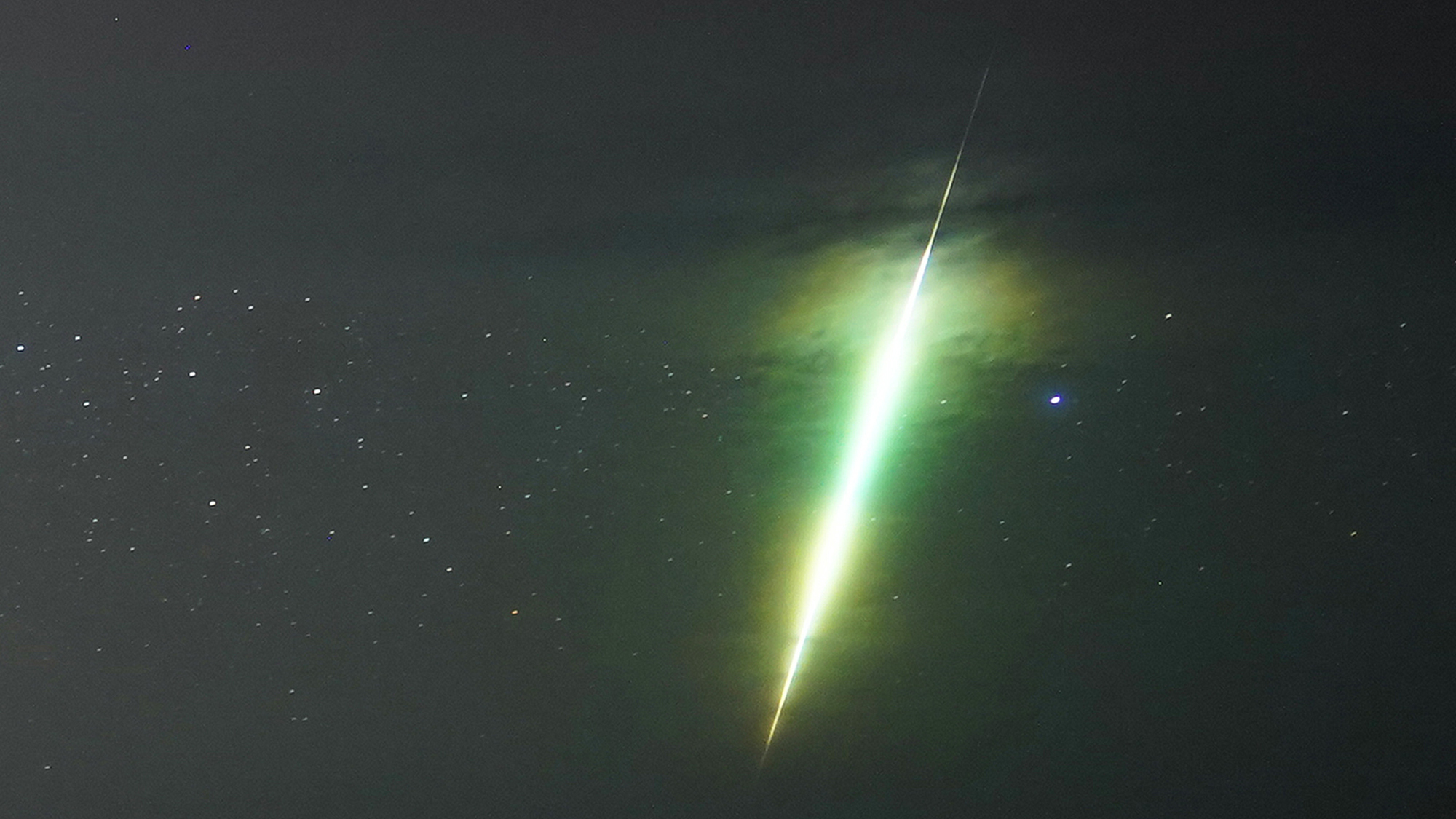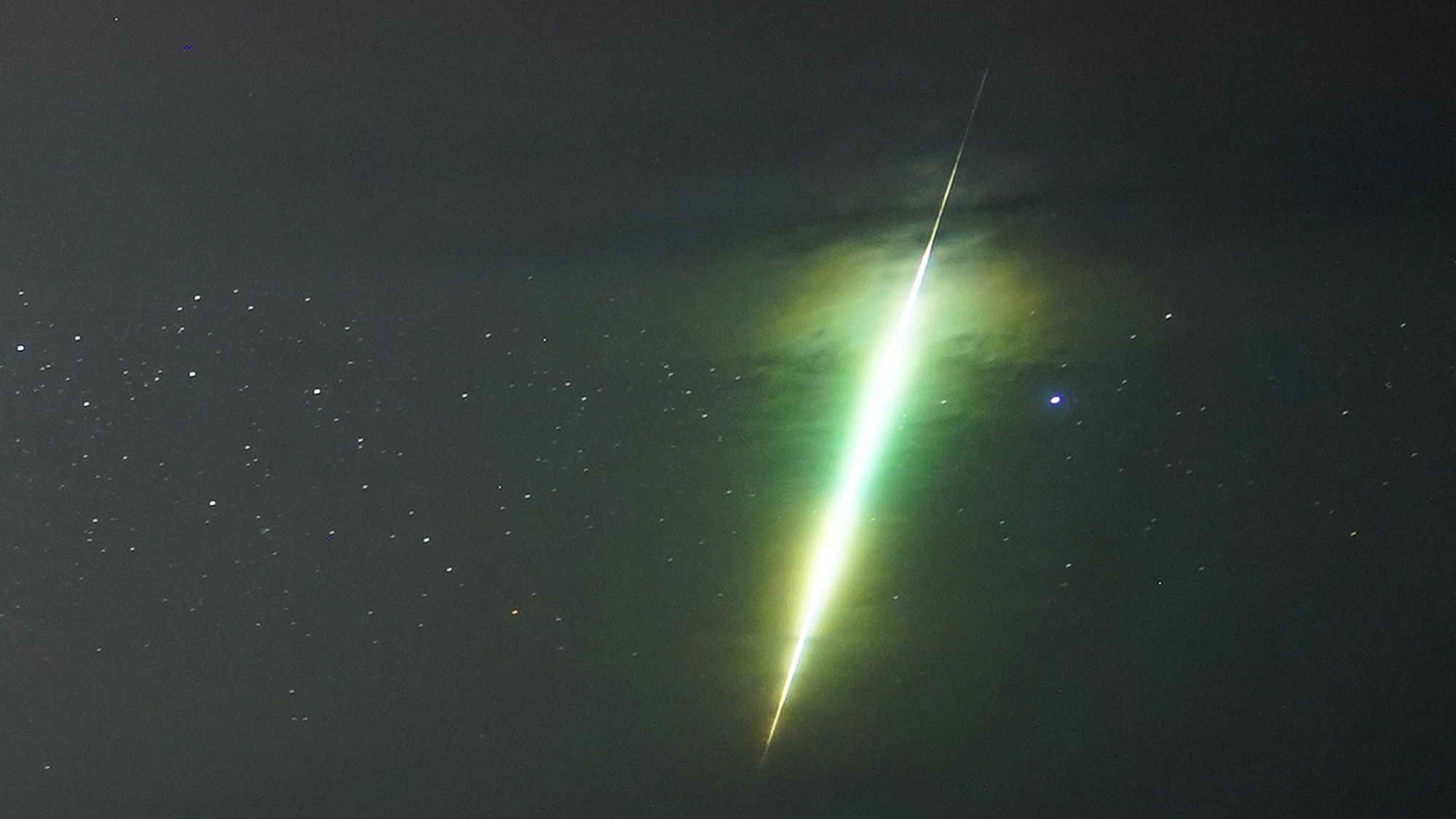
| Early-Mid October | Comet of the Century? |
| October 5 | Venus Returns as an Early Evening Star |
| October 7-8 | Draconid Meteor Shower Predicted Peak |
| October 17 | Full Hunter Supermoon |
| October 20-21 | Orionid Meteor Shower Predicted Peak |
For those of us who have passed the autumnal equinox, the days are getting shorter and cooler, but the night sky will still be pretty hot. It will be particularly warm if you are in the path of a ring of fire eclipse on October 2. There are also two chances to spot meteor showers this month and Venus will return as an early evening star as the temperatures and humidity drop. There may be the potential to see a bright comet, but it’s not really set in stone. Here’s what to look for this October.
Early-Mid October– Comet of the Century?
First discovered in January 2023, Comet C/2023 A3 (Tsuchinshan-ATLAS) has received a lot of buzz lately. As with many celestial events there are still some “ifs” with the comet.
“Comet C/2023 A3 is currently visible with the naked eye in the morning sky in Australia and Aotearoa New Zealand, with its best yet to come in the next few weeks,” University of Southern Queensland astrophysicist Jonti Horner writes in The Conversation. “And it does look promising. It’s unlikely to be the comet of the decade (never mind the comet of the century), but it will almost certainly become the best comet of the year.”
[Related: ‘Oumuamua isn’t an alien probe, but it might be the freakiest comet we’ve ever seen.]
For those in the Northern Hemisphere, the first few days of October could provide the best chances to see the comment. Horner recommends using binoculars and looking towards the eastern sky in the morning to try and catch a glimpse of this space rock.
However, as some scientists say, comets are like cats. They have tails and will often surprise us with their behavior, so predictions can change. Keep an eye on The Sky Live for more.
October 5– Venus Returns as an Early Evening Star
Venus will be the brightest planet in the sky this month. It will also be the early evening star again. On October 5, the second planet from the sun will be visible with a waxing crescent moon towards the east. In the morning, it will set west-southwest.
October 7-8– Draconid Meteor Shower Predicted Peak
This meteor shower is a bit of an oddball. According to EarthSky, its radiant point stands highest in the sky as darkness falls. This means that you will see more Draconids during the evening hours in the early morning hours after midnight.
After 9 p.m local time on October 7 through the wee small hours of the morning on October 8 is the best time to try and catch this first of two meteor showers this month. With a dark and moonless sky, you may see about 10 Draconid meteors per hour. However, in some rare instances, the fiery constellation Draco the Dragon can release hundreds of meteors in a single hour. The radiant point for this meteor shower is near the stars Eltanin and Rastaban, in the head of the constellation Draco. Since Draco is in the northern sky, the Draconids are typically best viewed from the Northern Hemisphere.
[Related: We finally know why Venus is absolutely radiant.]
October 17– Full Hunter Supermoon
The third of four consecutive supermoons will reach peak illumination at 7:26 a.m. EDT on October 17. The Hunter’s Moon will be below the horizon, so you can watch it rise into the night sky. Just like September’s Harvest Moon, October’s full moon rises at about the same time for several nights, bringing early light to aid harvesting and hunting. You can use this moonrise and moonset calculator to determine when it will rise where you live.
According to the Farmer’s Almanac, the name originates as a signal for hunters to prepare for the upcoming winter to ensure that they have enough food. It is also when animals like the stars of Fat Bear Week are beginning to bulk up for a long winter’s hibernation. Animals also may be easier to spot this time of year, as fields are cleared and leaves fall. Other names for October’s full moon include the Harvest Moon (gather) or Atkuwa Nuti in the Catawba Language of the Catawba Indian Nation, South Carolina and the Hunting Moon or Gä́nohdo’k’ah in Seneca.
October 20-21– Oronid Meteor Shower Predicted Peak
The annual Orionid meteor shower is expected to reach its peak on October 20. The Orionids can produce a maximum of about 10 to 20 meteors per hour, but only under a dark sky with no moon. The best time to try and spot them is just after midnight into the early morning hours.
The Orionid meteors that we can see come from Halley’s Comet. It orbits the sun about every 76 years or so and its dust particles are expelled from the comet’s nucleus as it travels. The particles are left behind in its path and Earth intercepts its path during late October every year. In December 2023. Halley’s comet began its journey back towards Earth and will be visible during the 2060s.
The same skygazing rules that apply to pretty much all space-watching activities are key this month: Go to a dark spot away from the lights of a city or town and let your eyes adjust to the darkness for about a half an hour.

